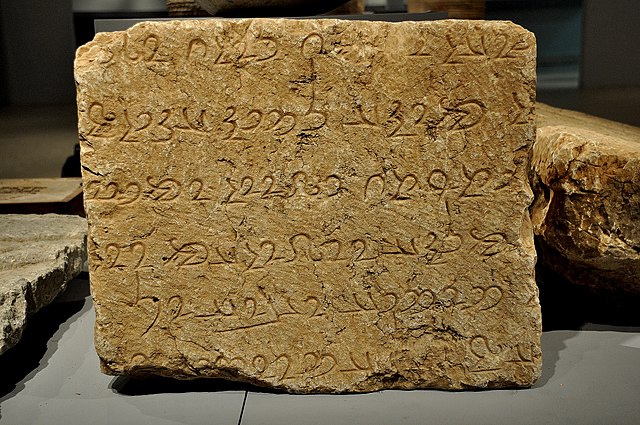The Paikuli inscription is a bilingual Parthian and Middle Persian text corpus which was inscribed on the stone blocks of the walls of Paikuli tower; the latter is located in what is now southern part of Iraqi Kurdistan near modern-day Barkal village, Sulaymaniyah Governorate, Iraq. These inscribed stone blocks are now in the Sulaymaniyah Museum; the field only contains the stones that were used in the construction of the tower. It was set up as a monument to victory, and tells how and why the Sasanian emperor Narseh ousted his grandnephew from power.
Paikuli Tower.
Stone block, D3, with Inscriptional Pahlavi (middle Persian) wrtitings
Recently discovered C2 inscribed stone block, Middle Persian script, from the Sassanian Paikuli Tower, Sulaymaniyah Museum
Recently discovered c12 inscribed stone block, Parthian script, from the Sassanian Paikuli Tower, Sulaymaniyah Museum
The Sulaymaniyah Museum, or Slemani Museum, is an archeological museum located in Sulaymaniyah in the Kurdistan Region of Iraq. It is the second largest museum in Iraq, after the National Museum of Iraq in Baghdad. It houses artifacts dating from the prehistoric period to the late Islamic and Ottoman periods. Several halls of the museum have undergone renovation work and the museum was closed to the public for refurbishment from October 1, 2018, to October 2019.
School children visiting the Sulaymaniyah Museum
The Paikuli Gallery at the Sulaymaniyah Museum, final preparations before official opening
Slemani Museum Kids
Three days before the official inauguration of Narseh Gallery at Sulaymaniyah Museum, Iraqi Kurdistan








